So Where is Busan?
With over 3.6 million people, Busan is South Korea’s second largest city and has the largest seaport.
It was formerly known as Pusan but had a name change to Busan in 2000.
People visit Busan to seek a more laid-back atmosphere than the capital city of Seoul.
It is located at the southern tip of the Korean peninsula and sits roughly 450km southeast of Seoul.
Jeju Island to Busan
We were short on time as we had an upcoming house sit in Incheon so decided on flying from Jeju to Busan. It was only a quick one hour flight on Air Busan so we wasted little time on transport.
On arrival in Busan, we made our way to the booking office for the Limousine Airport Bus into the city. This was easy to find and we just needed to wait for the next bus to come through the terminal. Tickets cost us 12,000krw/$15nz for two which is much cheaper than a taxi.
Accommodation
We booked into the Stanford Inn. It cost us 171,678krw/$224nz (without breakfast) for 3 nights. Located in the heart of Busan, we were really handy to public transport and a lot of the main tourist attractions in the city.
It was a high rise hotel and we were located on the 15th floor so had a good view towards Busan Tower and over BIFF Square. There was plenty of nightlife in the area and we could only just hear a muffled bass beat during the evening. It seemed that things closed down relatively early so didn’t disrupt our sleep at all.
What’s to See in Busan?
Now, needless to say, the common theme throughout my blogs on South Korea is that it is cold! Busan was no exception. There was a dusting of snow on the surrounding mountains but that wasn’t about to stop us seeing everything there was to see in the city.
Jagalchi Market (Fish Markets)
This is the largest seafood market in South Korea. If you wander the area you will find alive, cooked, dried fish and seafood for sale.
Most of the sellers at the fish market are women, so the vendors here are called Jagalchi Ajumma (meaning middle-aged or married woman in Korean).
This area was located just behind our hotel so it was easy to meander down the alleyways. It is a bustling area both early morning and late into the night. There are many lanes and alleyways as well as the big main market where all action happens.
There are many choices to stop off and have a taste of the fresh bounty from the sea. These range from the touristy, flashy restaurants to the small family run establishments which would appear packed full of locals. We noticed that most tables sported quite a lot of Sujo (Korean Whiskey).
This market represents Busan and is famous throughout the country.
Busan Tower
Busan Tower is a symbol of Busan that stands 69m above sea level at a height of 120m. It is not the tallest tower that we have been in while travelling in Asia, but it is a good place to get a view of the city’s port and surrounding hills.
It is lit up at night with a sequence of coloured lights and patterns. We got a good view of this from our hotel room throughout the evening.
Busan Tower was built in 1973. It doesn’t have any transmitting equipment which sets the tower apart from many other towers with observation decks. Most of them were built for TV and radio towers.
We managed to score a discount off our entrance fee by showing our Air Busan boarding pass. It cost us 8,000krw/$10nz (50% discount).
Surrounding the base of the tower is Yongdusan Park. An attractive park covering 69,000 square metres and has over 70 different species of plants.
There are also quite a few structures within the park including a 5m diametre flower clock.
BIFF Square
Now, what does BIFF stand for you might wonder? Well, it stands for Busan International Film Festival. The entire district was newly transformed in 1996 ahead of the first film festival. Originally, the area held little more than a pair of cinemas that were built over half a century ago.
Located across the street from our hotel, we frequented the area every evening and we were spoilt for choices when it came time for a drink and dinner.
There were certainly some pricey options as this area is one of the top tourist destinations but as usual, there is always the street stall vendors that always seem to attract us.
You can also find many of the top end retailers when it comes to fashion, electronics and cafe franchises.
Gamcheon Culture Village
The village has been formed by houses built in staircase-fashion on the foothills of the mountains surrounding Busan. It has been given the nickname of ‘Machu Picchu of Busan’. I’m not sure that I would go that far but we spent a delightful few hours weaving in and out of the multiple and sometimes endless passageways and alleys, wedged between the local’s homes.
We paid for a map of the area from the Information Office at the start of the trail. We’re rather pleased we did as it was like a maze, trying to find our way along the paths up and down sometimes steep stairways.
The entire town is vibrantly decorated with gaudy colours, street murals and sculptures which have been created by the residents.
In previous years, the village suffered a decline in numbers with residents being attracted to the bright lights and work in the nearby Busan city. In order for the town to be ‘reborn’ as a cultural hub and attract the tourism dollar, the district received funding from various government offices for the purpose of urban regeneration. Walls were painted with fresh vibrant coats of paint and artworks installed throughout the area, the village was given a new name.
The village was certainly ‘reborn’ and is Busan’s most colourful and artistic spot.
United Nations Memorial Cemetary
The UN Memorial Cemetary is a burial ground for 2,300 casualties of the Korean War. There are 2,289 military personnel and 11 non-combatant.
It is laid out over 35 acres and is the only United Nations Cemetery in the world.
The graves are set out in 22 sites designated by the nationalities of the buried service members.
The serene and beautifully laid out park also include a Memorial Service Hall, Memorabilia Hall, and various monuments representing the different countries placed at the sight of each individual country.
We spent some time wandering around the different sites and in particular, pausing at the NZ site out of respect for our fellow NZ servicemen who lost their lives fighting in Korea.
Igidae Park Coastal Walk
Igidae is not really popular with tourists as it is quite tricky to get to. We needed to transfer from trains and buses and then a long walk (uphill!) just to reach the start of the coastal walk.
Igidae is one of Busan’s beautiful coastlines and is known for its spectacular views of Gwangan Bridge, Haeundae Beach and Jangsan Mountain.
The 5km coast walk takes around 2 hours. It was a perfect hike with magnificent views of the ocean and city thanks to the very impressive infrastructure. Steps and handrails were in perfect condition and we walked over perilously high, modern suspension bridges. There was seating wherever the views was especially good, and even toilets were found along the trail.
The area was used for military operations and prohibited from civilian access until 1993.
Oryukdo Skywalk
Now if you don’t know by now, I’m not the best with heights. So what am I doing walking out from a 35-metre high coastal cliff onto a 15-metre long see-through glass walkway, suspended in mid-air?
In 2013 the Oryukdo Skywalk opened with the theme ‘Walking over the Sky’. The horseshoe-shaped platform comprises of 24 glass plates connected to iron columns. The glass is 12mm thick and coated with a bulletproof film. Perfectly safe they say!!
The skywalk offered us views of the crashing waves below through the transparent floor. The open sea stretched out ahead of us offering the perfect photo op. We could also get a great view of Daemado Island in the distance.
Songdo Island and Beach
We travelled a mere 3km by public transport towards Songdo Island and beach. The beach was Korea’s first official beach and opened in 1913. After being damaged by frequent hurricanes, the beach underwent a 5-year reconstruction starting in 2000.
There is a nice walkway over the water (which they call a Cloudwalk) which offers great views back towards the beach and cable car travelling overhead.
Cable Car
Now we have learnt that anything to do with cable cars in Asia means that you need to get there early. Queuing for longer than the ride actually is, isn’t my idea of the best use of our time.
We had beaten the crowds and there were no queues so we bought a return ticket on the Songdo Cable Car. A return fare cost us 30,000krw/$26nz for two. It was quite expensive considering we had paid a lot less for longer cable car rides.
The original 420-meter Songdo Marine Cable Car was built in 1964 and ran until 1988. A severe hurricane rendered it too unstable to use so remained closed until June 2017. A massive redevelopment was undertaken at a considerable cost.
The 1.6km (10 minutes) ride starts from Songnim Park on the east side of the beach to Anman Park on the west side. They also have the option of Crystal Cars which has the transparent floor.
I do have to say though, the views were outstanding. We had a beautiful day so we had uninterrupted views of the water as well as being able to follow the coastal walking track that links the two stations. In hindsight, we should have bought a one-way ticket and walked the trail back. The coast track was approximately 3km long and like other coastal walks, the track was in amazing condition with great bridges and views. We did walk some of the track and managed to get some great photos.
Haeundai Beach
We were back on the public bus to Busan and then jumped on another for an hour-long ride to the popular Haeundai Beach area.
It is often considered one of Korea’s most famous and beautiful beaches. The white sand beach is 1.5km creating an impressive coastline.
Because of its easy access from downtown Busan, the beach is busy all year round, especially during the summer months of July/August. Numerous festivals are held here and they co-host the Busan International Film Festival. The beach also featured in the 2009 disaster movie ‘Tidal Wave’. The surrounding area is home to most of Busan’s expat population.
We wandered the length of the beach and continued on the coastal walk around Dongbae Island (originally an island but now connected to the mainland). The full name of Dongbaekseom means island of camellias and as the name suggests, the island is covered in them.
APEC House
At the tip of the island’s peninsula sits the round, glassy Nurimaru APEC House, the site of the 2005 APEC Leaders’ Meeting. It is free to wander through the 3,000-metre-square building that is now a museum dedicated to the 2005 meeting. Inside the structure is the roundtable at which the meeting was held and even a replica of the meal served to the APEC representatives.
It is situated in gorgeous park-like surroundings and has expansive views back towards Gwangan Bridge and the Busan coastline.
It was another hour-long ride back to our hotel so decided to call it a day.
Goodbye Busan
We are glad that we had the opportunity to spend 3 nights in Busan.
The following day we were on the high-speed train back to Seoul to start our house sit in Incheon.
The KTX train from Busan to Seoul is around 2 hours and cost us 120,000/$150nz for two.
Click on the link below for highlights of our stay in Busan.
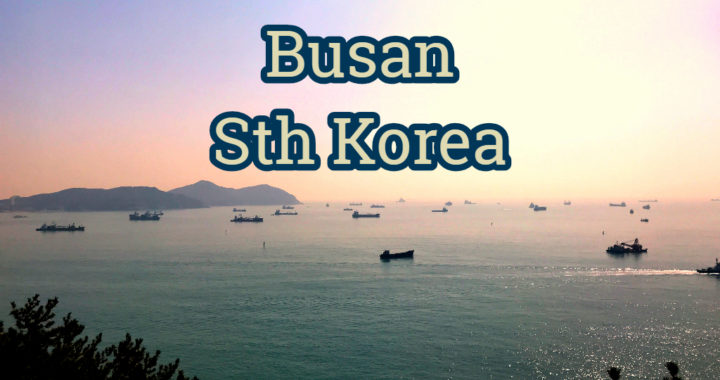
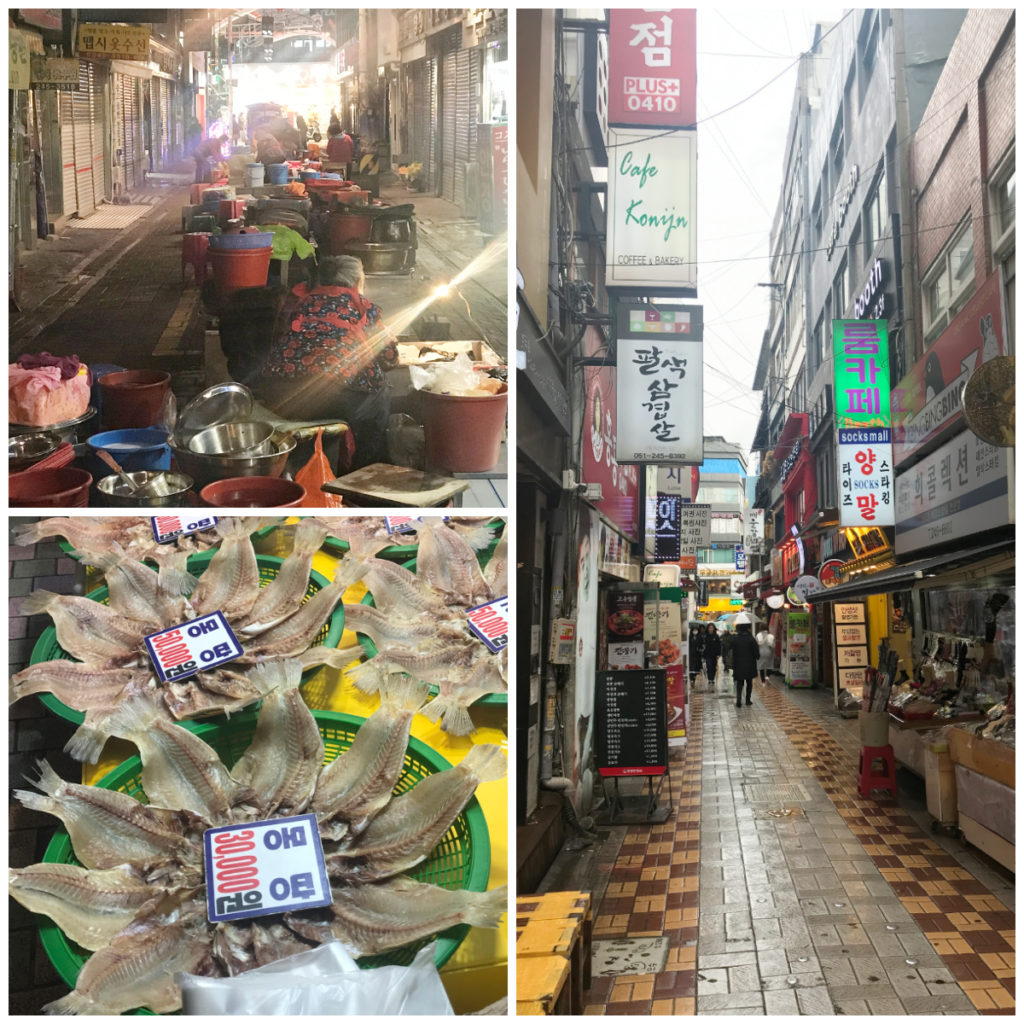
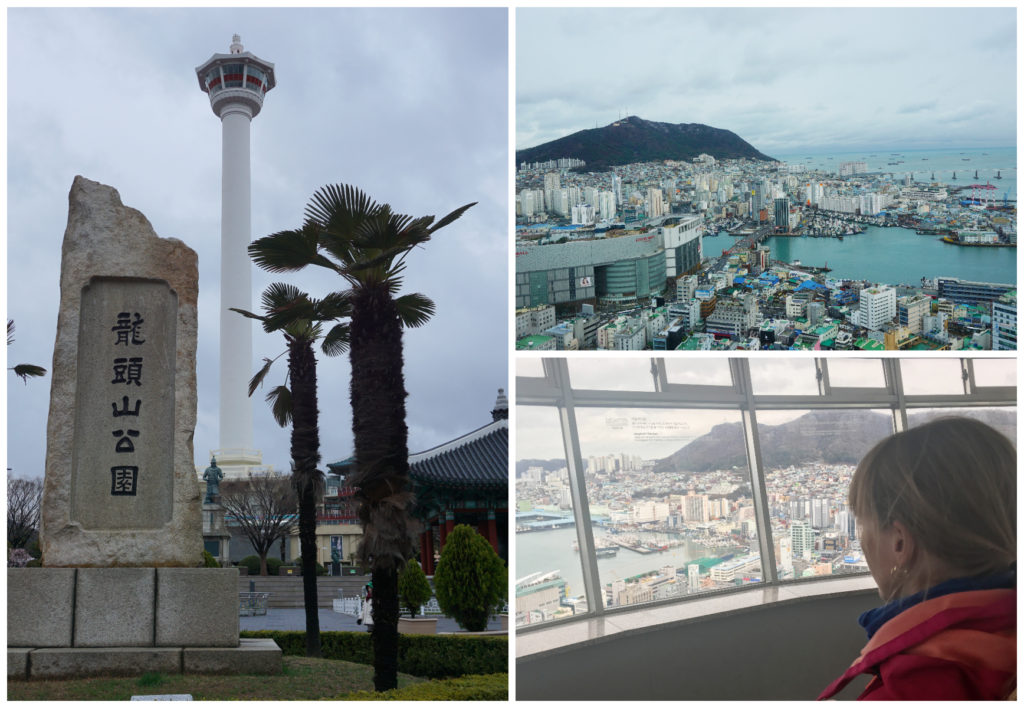
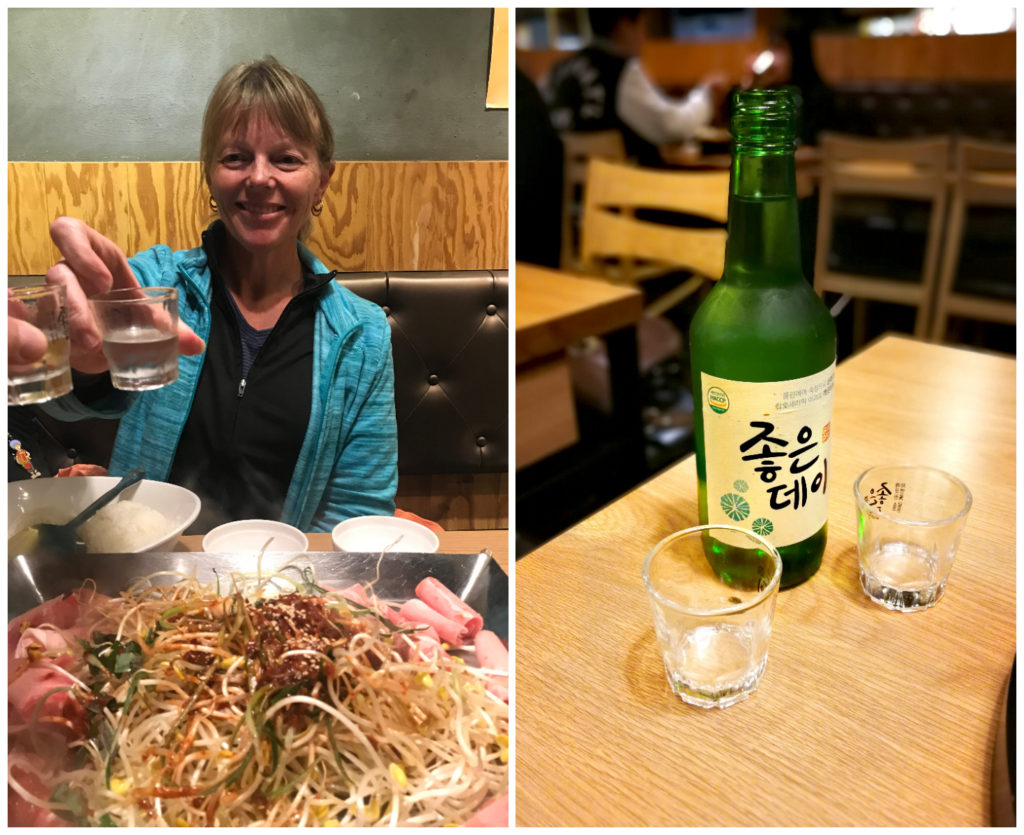
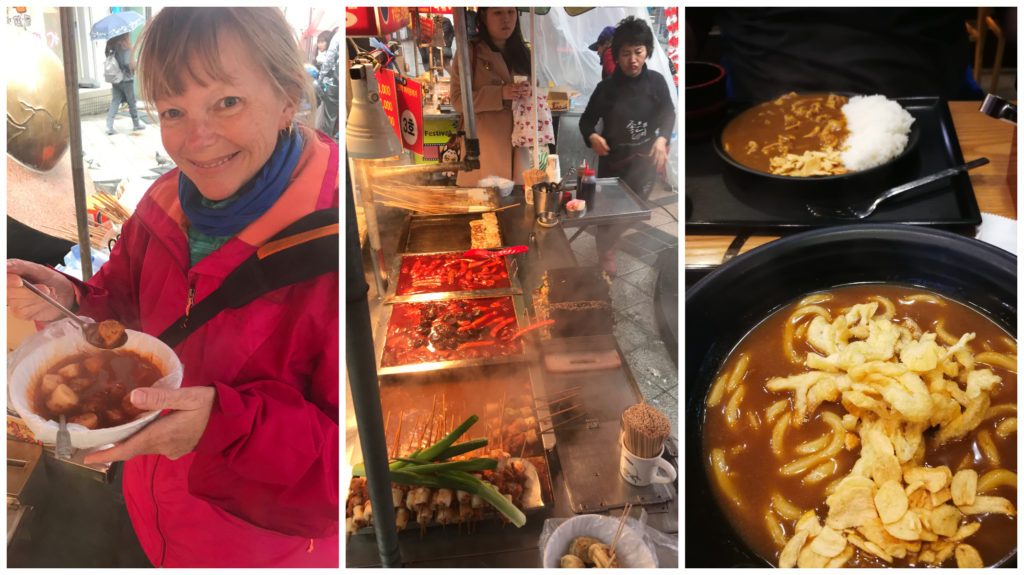
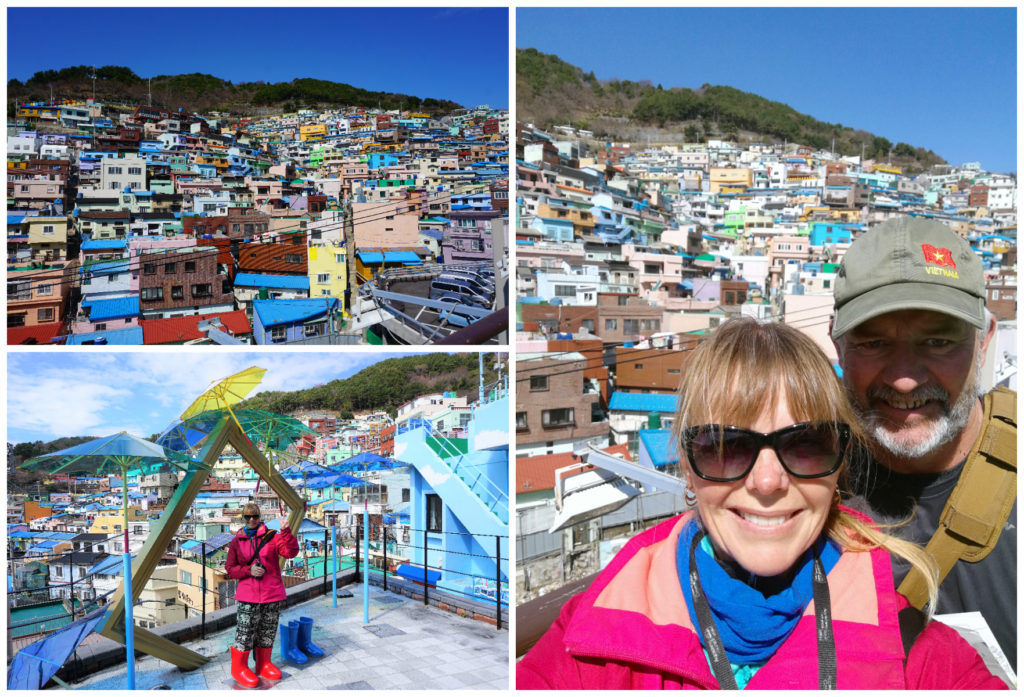
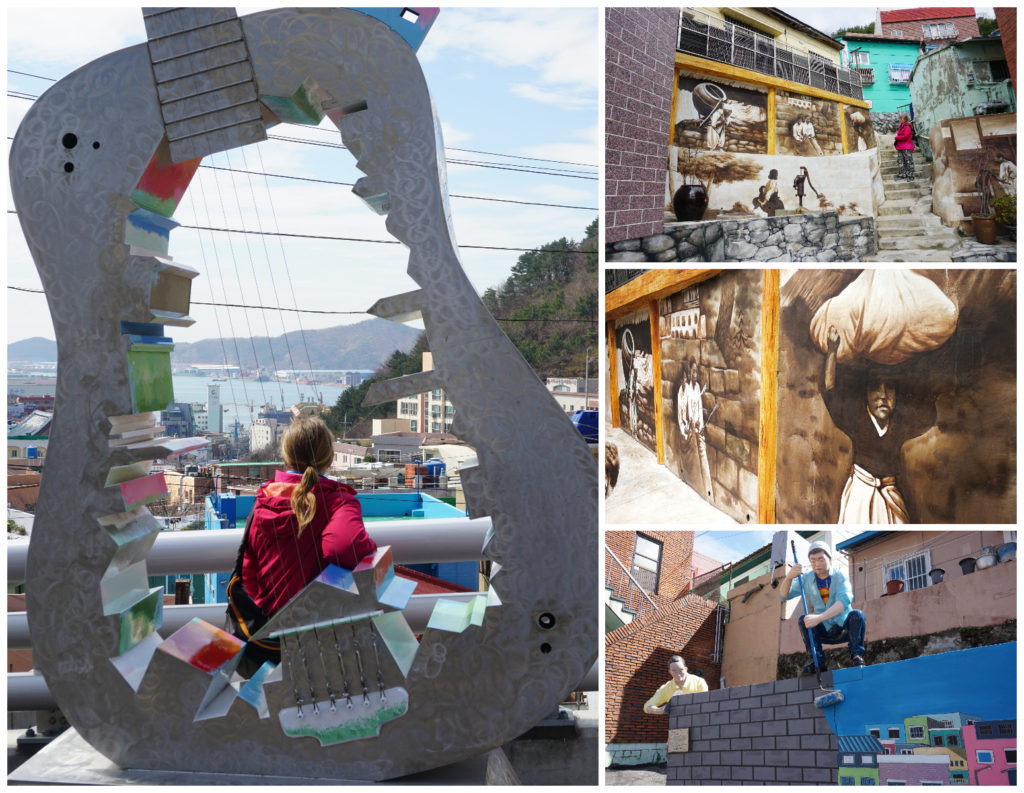
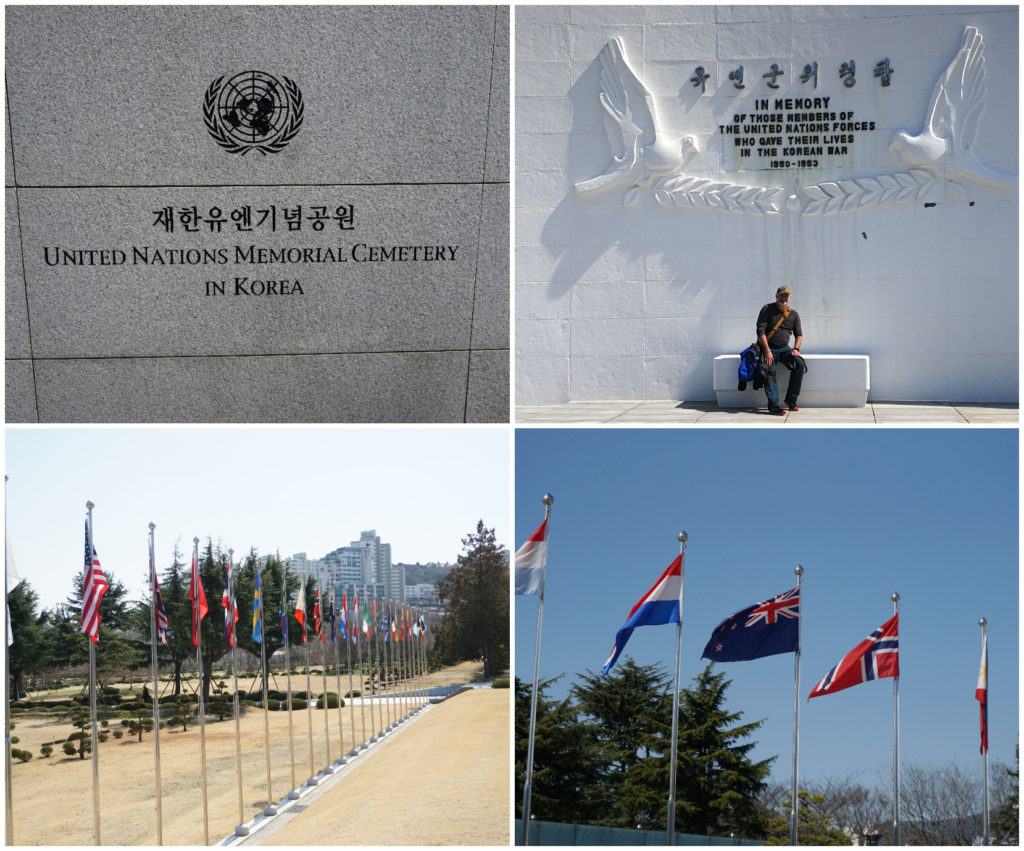
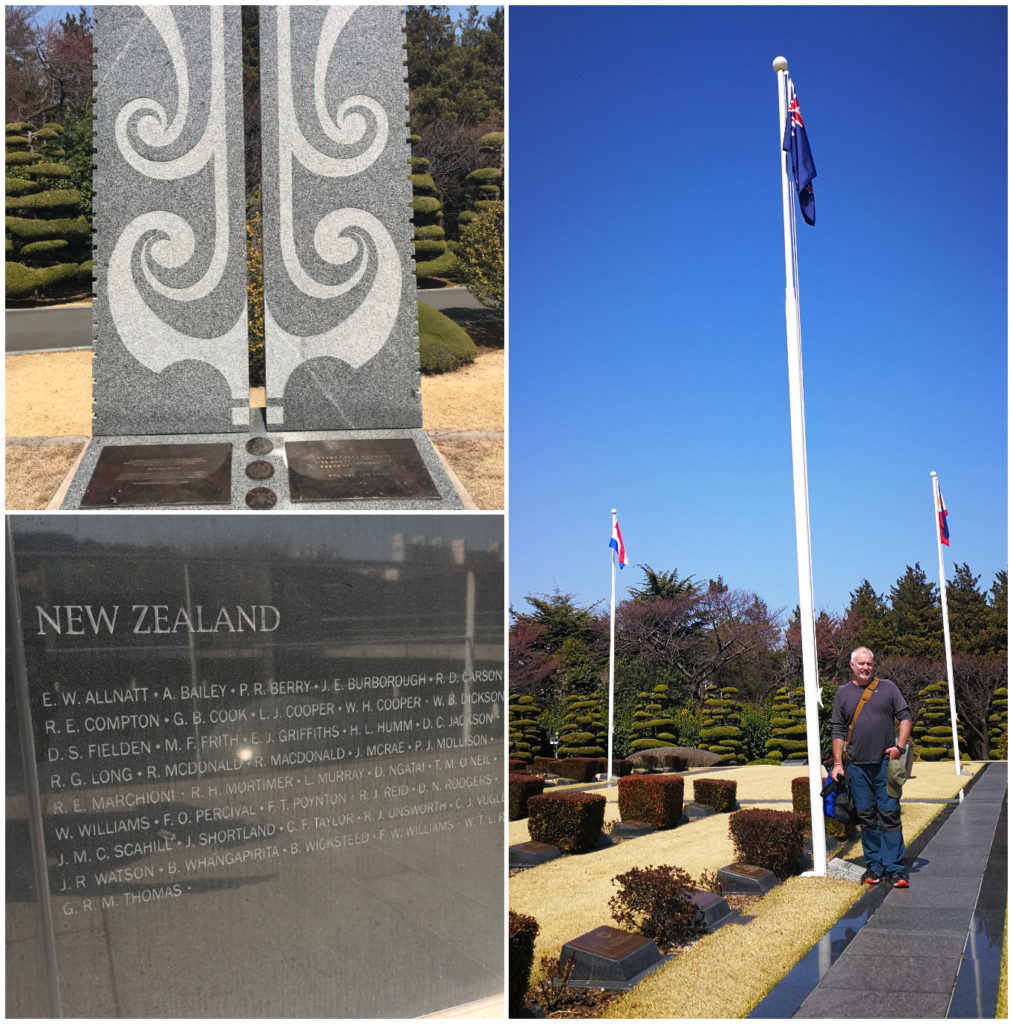
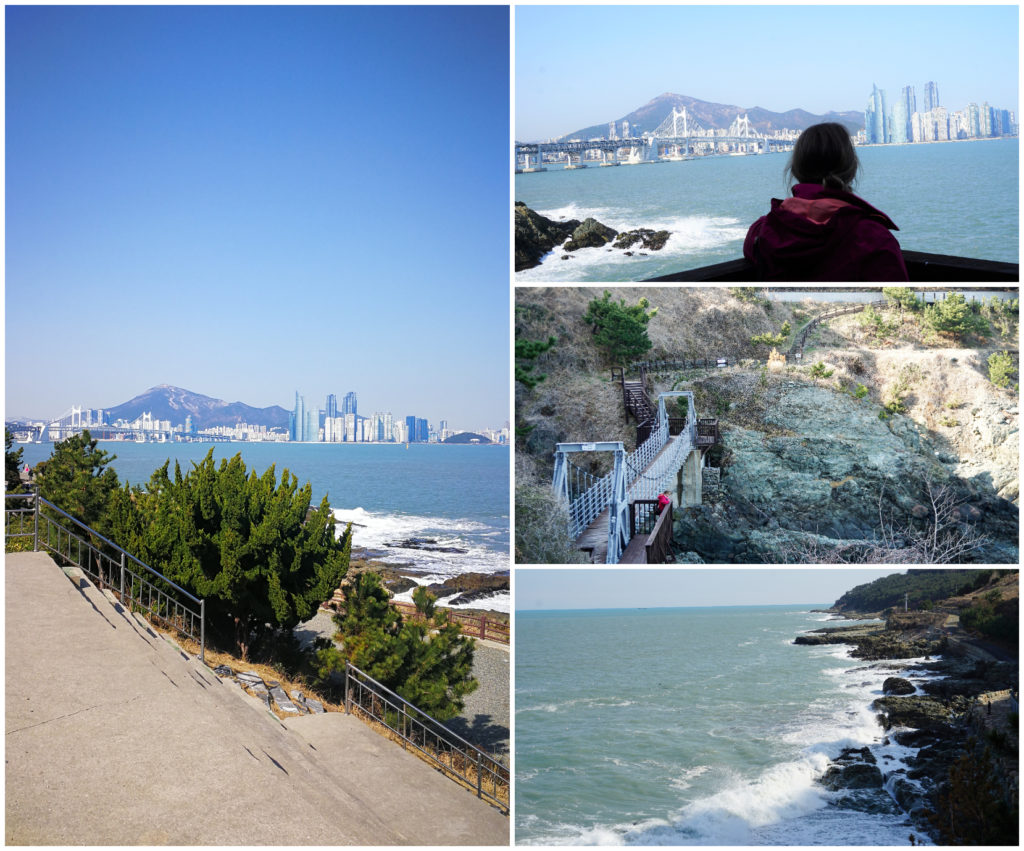
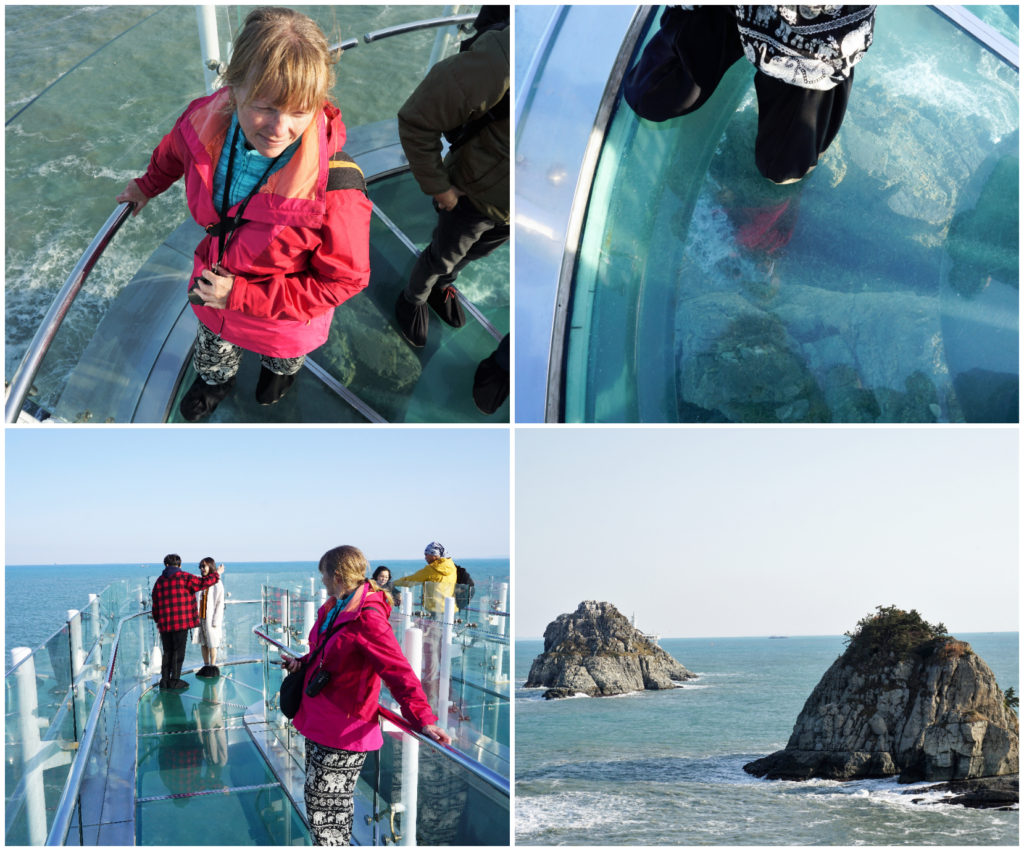
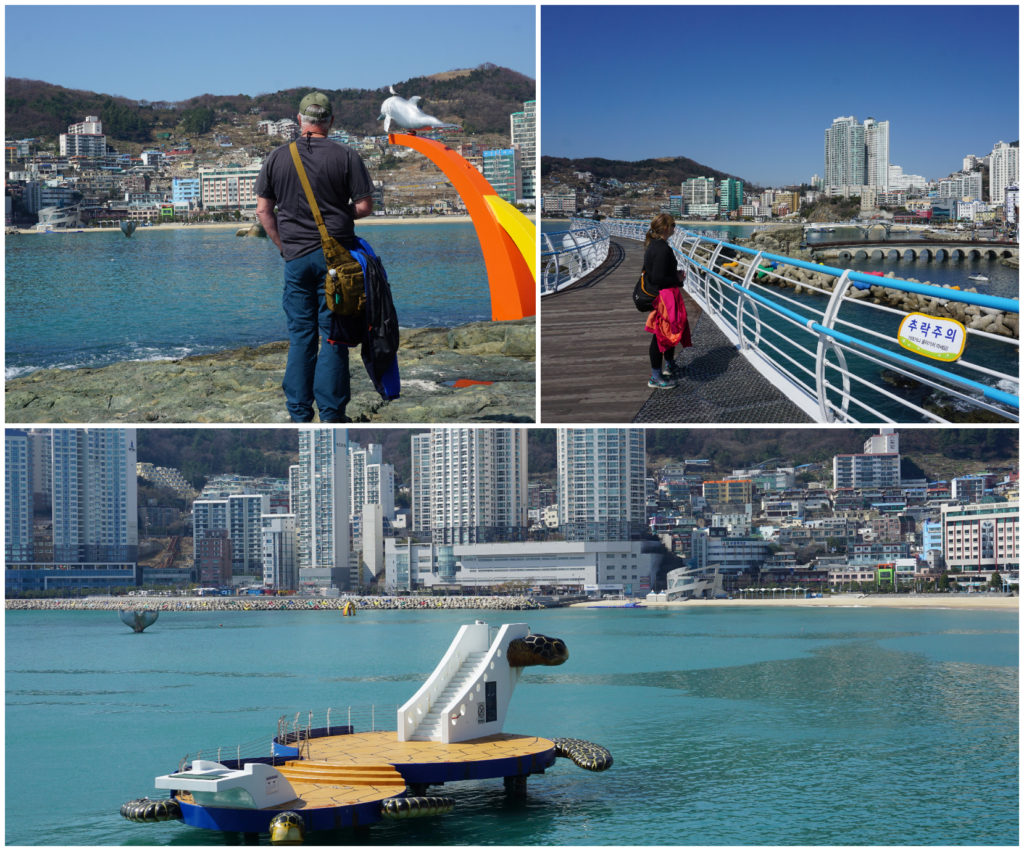
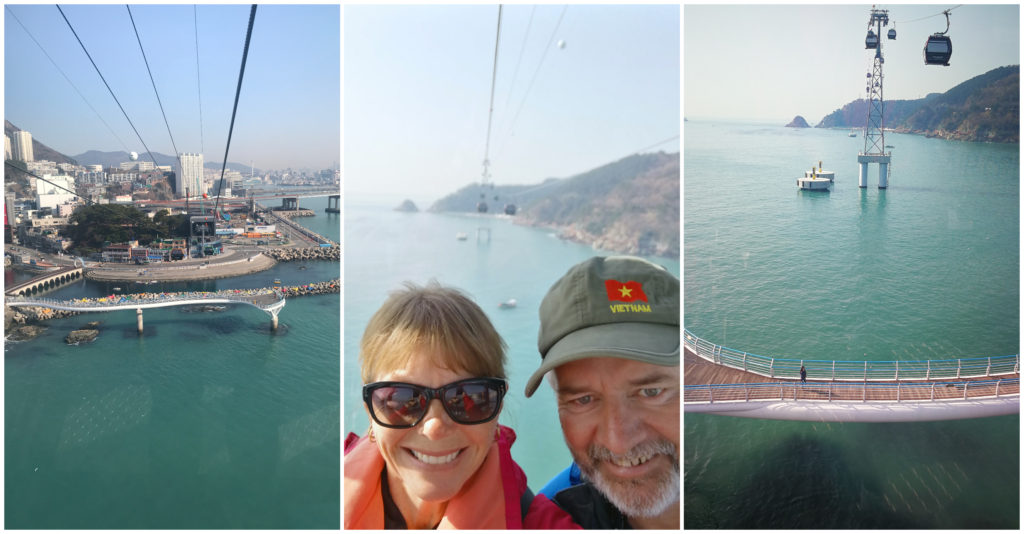
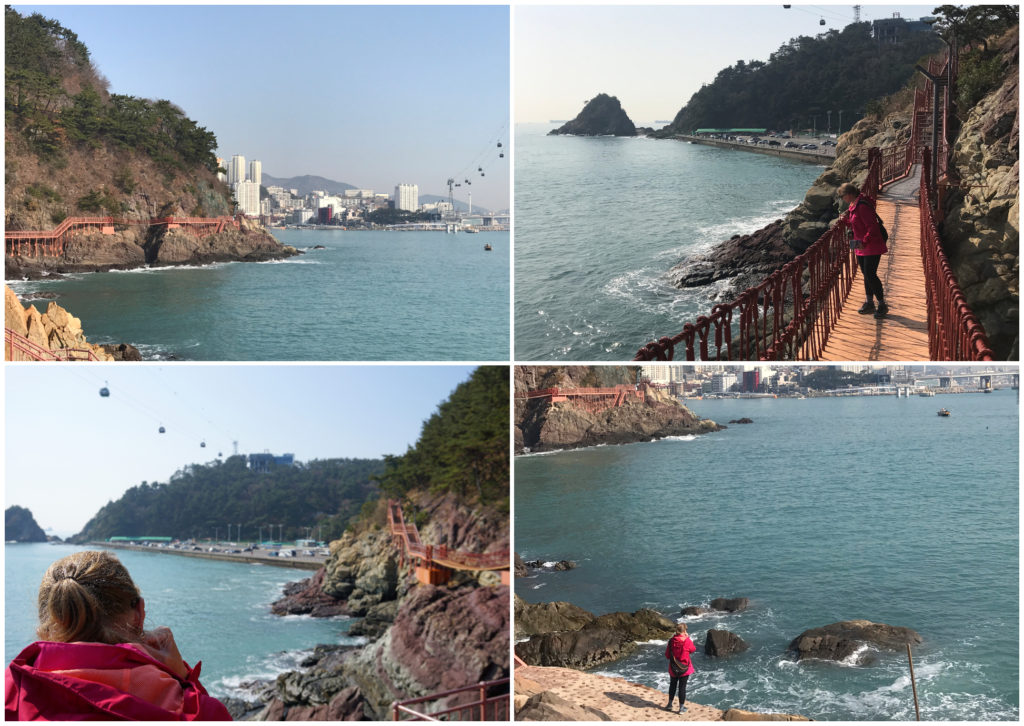
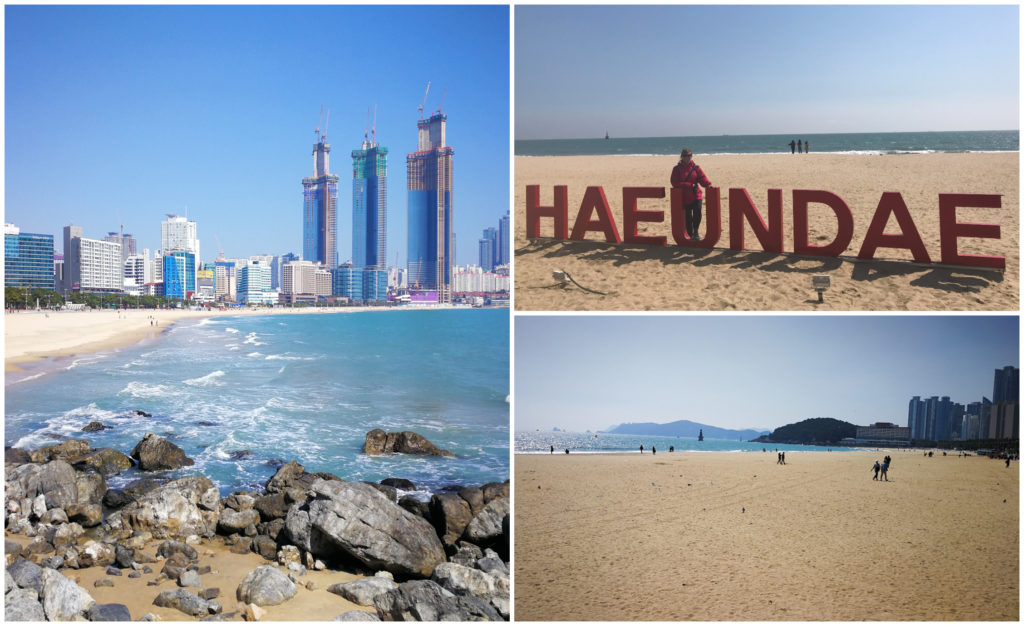
Thanks again Linda for introducing me to yet another part of Korea, I give my hat off to you two for getting out there and exploring the not so touristy areas of Asia!! If we do land up exploring Asia, I will have to ask some questions and refer back to these posts!!